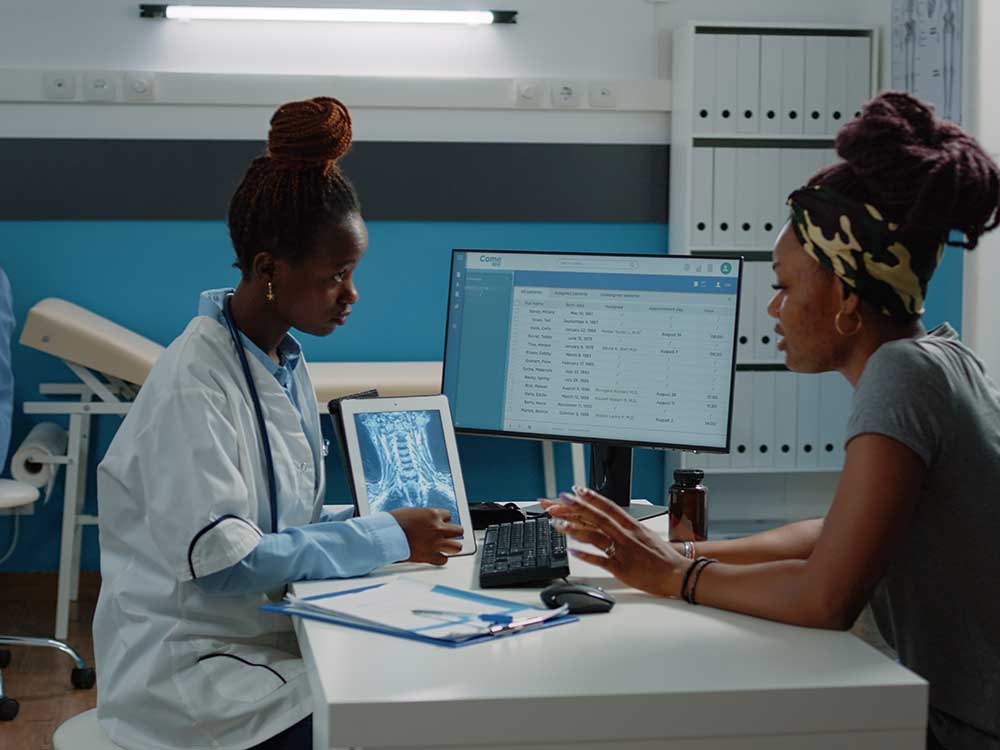Just how to Start an Effective Profession in Medical Administration: A Newbie's Guide
Just how to Start an Effective Profession in Medical Administration: A Newbie's Guide
Blog Article
Ideal Practices in Medical Management for Improving Performance and Minimizing Costs
In the ever-evolving landscape of medical care, the quest of ideal practices in medical administration is critical for boosting effectiveness and curbing expenditures. By incorporating sophisticated innovations such as digital wellness records and telemedicine, doctor can simplify operations and improve individual care. However, modern technology alone is not a cure all; optimizing source allocation and cultivating joint interaction among treatment teams are equally essential (medical administration). As companies strive to balance quality and price, what approaches should be prioritized to attain these twin objectives? The solution to these inquiries hold the secret to an extra lasting medical care system.
Leveraging Advanced Innovation
The combination of electronic solutions right into medical care systems has changed the means facilities operate, streamlining procedures and improving patient care. By streamlining patient info, EHRs eliminate the need for difficult paperwork and help with seamless interaction amongst health care suppliers.
Telemedicine is an additional technical improvement that has transformed client communication. It offers comfort for both clients and healthcare specialists by making it possible for remote assessments, which can reduce the requirement for in-person check outs and enhance visit organizing. In addition, telehealth systems can prolong health care access to rural or underserved areas, connecting spaces in treatment delivery.
In addition, using Expert system (AI) and artificial intelligence is coming to be increasingly common in predictive analytics, permitting early discovery of possible health problems and even more enlightened decision-making. These modern technologies, when integrated efficiently, can improve diagnostic accuracy and personalize individual treatment strategies, inevitably causing improved medical care results and functional effectiveness.
Optimizing Resource Allotment
Efficient source appropriation is important for making best use of the effectiveness of clinical administration. By tactically taking care of sources such as workers, devices, and finances, medical care facilities can considerably boost their operational performance, improve person outcomes, and reduce unnecessary expenses. The very first step in maximizing source allotment entails performing a thorough analysis of current properties and identifying areas where resources might be underutilized or exhausted. This assessment must be data-driven, using metrics and analytics to inform decision-making procedures.
Prioritizing resource allotment based on individual needs and solution demands is necessary. This involves aligning resources with high-demand locations, such as emergency situation treatment or specialized treatments, to ensure timely and reliable client care. Implementing versatile staffing designs can likewise maximize labor sources by changing personnel allotment in reaction to rising and fall person quantities. Furthermore, embracing telemedicine and various other technical services can alleviate physical resource restrictions by using alternate avenues for patient-provider interactions.
Funds ought to be meticulously kept an eye on and allocated with critical foresight to sustain both temporary operational requirements and long-term institutional goals. This consists of investing in training programs that boost staff competencies and taking on energy-efficient practices that minimize functional prices (medical administration). Eventually, an optimized resource allowance approach cultivates a lasting medical care environment that is responsive, efficient, and economically sensible
Streamlining Operations Procedures
When health care facilities goal to boost functional effectiveness, enhancing process procedures ends up being a critical focus. Effective workflows reduce click here now redundancy, remove unneeded actions, and improve sychronisation among medical care specialists. This technique not just accelerates service delivery but likewise improves the quality of patient treatment.

Following, modern technology assimilation plays a considerable role in improving process. Executing electronic health and wellness records (EHRs) and digital doctor order entrance (CPOE) systems minimizes documentation, reduces human error, and ensures details is accessible to all appropriate employees. Furthermore, leveraging telemedicine systems can enhance client appointments and follow-ups, site web minimizing the stress on physical framework.

Inevitably, streamlined operations lead to cost decreases and boosted person complete satisfaction, promoting an extra sustainable healthcare environment.
Enhancing Information Administration
Structure upon structured process, maximizing information administration ends up being a vital component in advancing medical care management. Reliable information management systems are crucial for keeping precise individual documents, enhancing decision-making, and making certain compliance with regulatory criteria. By executing robust information monitoring remedies, health care centers can boost the top quality of patient care while concurrently lowering operational expenses.
One secret aspect of improving data monitoring is the combination of sophisticated digital wellness document (EHR) systems. These systems help with the smooth exchange of individual information across different divisions, decreasing duplication of examinations and reducing errors. A well-designed EHR system supports data analytics, making it possible for doctor to determine trends and make informed choices relating to individual treatment.
In addition, safeguarding person data is vital. Taking on thorough cybersecurity steps, consisting of security and regular audits, makes sure the stability and discretion of sensitive details. This not just safeguards people but additionally keeps the organization's track record.
Purchasing staff training is an additional essential aspect. Informing healthcare professionals on information administration techniques enhances their capacity to successfully utilize technology, resulting in improved patient outcomes. In verdict, enhancing data monitoring through advanced modern technology and detailed training is vital for accomplishing efficiency and price decrease in clinical management.
Fostering Collaborative Interaction
A vital part ahead of time medical management is cultivating joint communication among health care professionals. Effective interaction is extremely important for ensuring smooth individual treatment, visit site optimizing treatment end results, and lessening errors. By motivating open discussion and sychronisation throughout multidisciplinary teams, health care companies can enhance their operational effectiveness and lower unneeded prices.
Central to this strategy is the combination of interaction modern technologies such as electronic wellness records (EHRs) and secure messaging platforms, which promote the rapid exchange of critical client info. These devices allow doctor to gain access to and share information in actual time, making certain that all staff member are informed and straightened in their decision-making procedures. Normal team conferences and interdisciplinary rounds can further promote a culture of collaboration and accountability.
Educating programs focused on enhancing communication skills are also essential. Ultimately, fostering collaborative communication leads to improved medical care shipment and cost savings.

Final Thought
Including innovative technology, such as digital health records and telemedicine, together with optimized source allotment and streamlined workflow procedures, is vital for boosting performance in clinical management. Efficient information administration and cultivating collaborative interaction amongst medical care teams are vital for minimizing redundancies and improving care quality. By focusing on precautionary treatment and engaging in quality improvement initiatives, medical care companies can accomplish significant cost financial savings and enhanced individual results, thus ensuring sustainable health care shipment in a significantly complex environment.
Report this page